#bison
Note
I saw some bison the other day
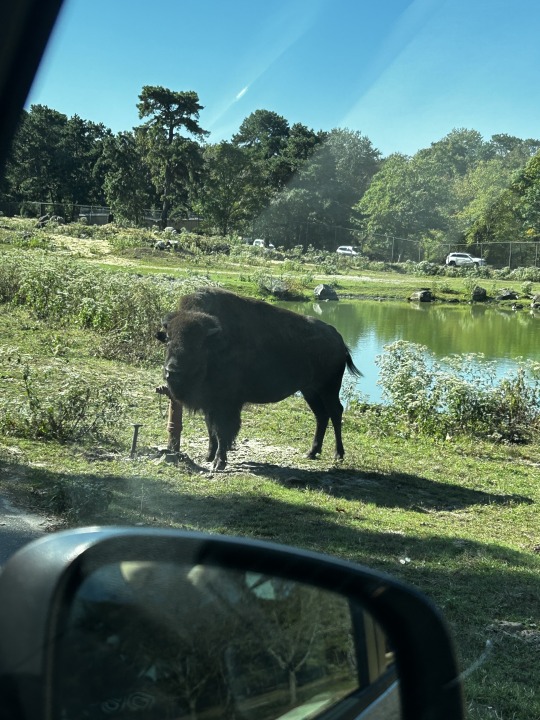
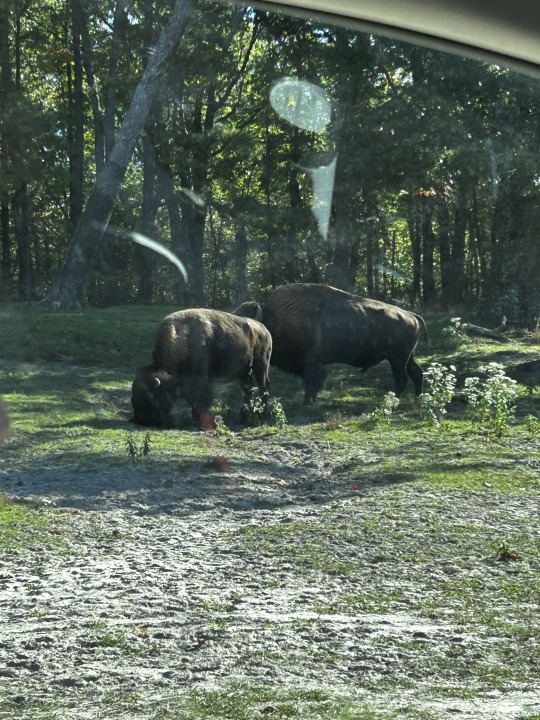

bison are one of the most perfect creatures on the planet thwnk u so much
123 notes
·
View notes
Text
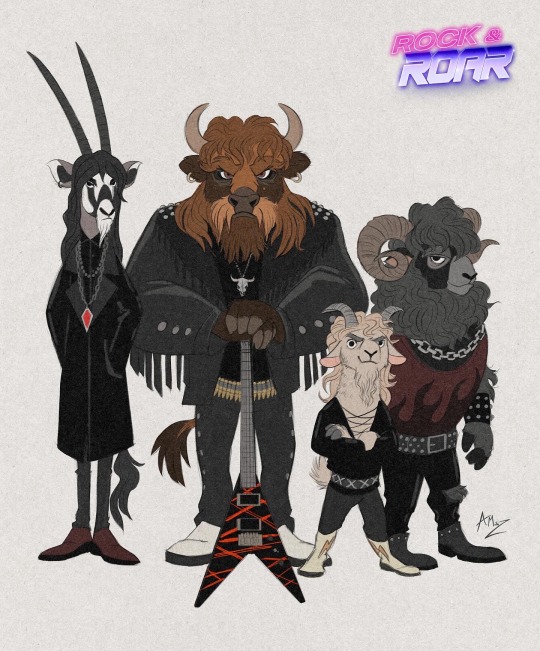
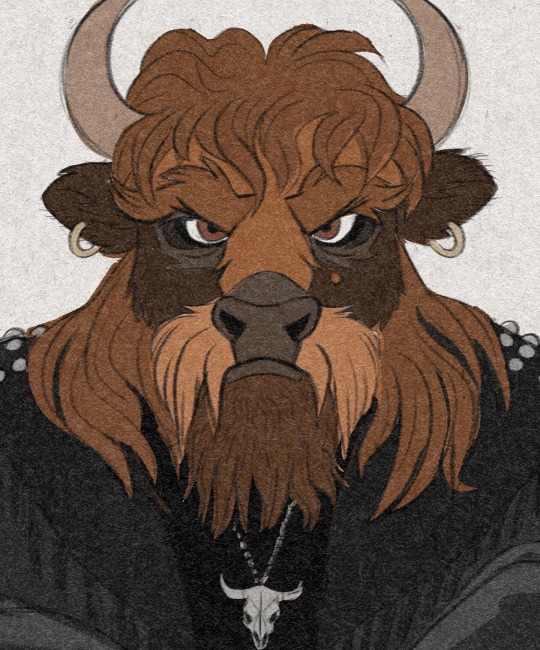
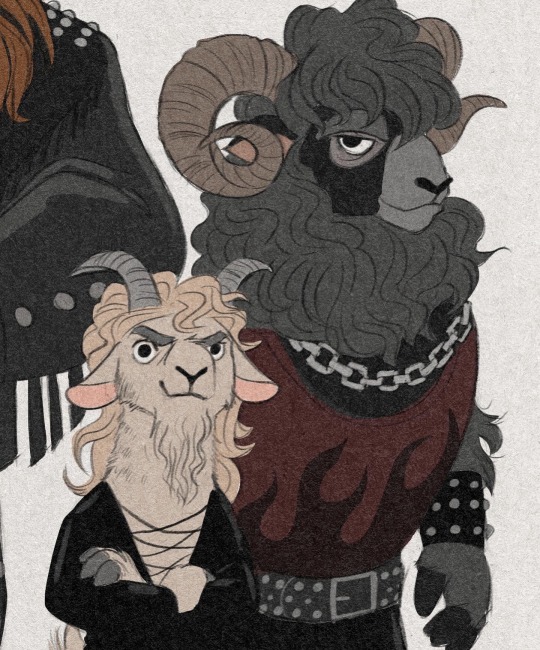


Outta the way! The kings of Metal are charging in! 🤘🏼Meet Steel Stampede, fronted by the legendary Grant Ruffalo. In the world of Rock & Roar, heavy metal music was originated by, and belongs to, animals with horns, and that’s the origin of the “🤘🏼” hand symbol. The last image is a drawing of Grant from all the way back in 2013. Miles will meet these guys in chapter 4!
#rock and roar#webcomic#concept art#visual development#original character#animal characters#webcomics#anthropomorphic#cartoon animation#anthro#metal#heavy metal#metalhead#metal heads#Buffalo#bison#oryx#antelope#goat#rams#sheep#ungulate#bovine#horns#my ocs#anthro oc#anthro artist
5K notes
·
View notes
Text
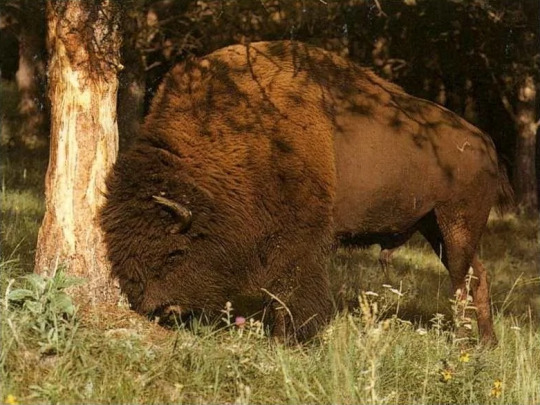
American bison
By: Unknown photographer
From: Wildlife Fact-File
1990s
3K notes
·
View notes
Text
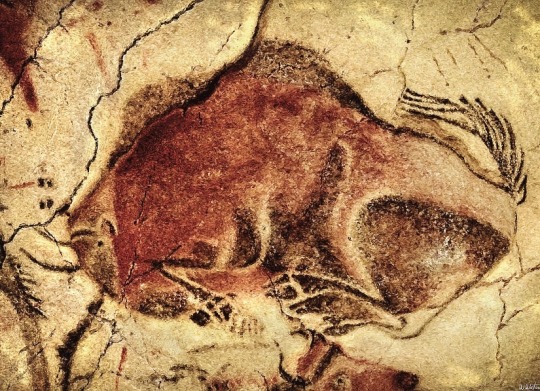

Bison From Cave Of Altamira, Santander, Spain, ca. 10,000 B.C, with artist’s interpretation.
#cave paintings#cave art#bison#paleolithic#petroglyphs#wild animals#animals in art#art history#aesthetictumblr#tumblraesthetic#tumblrpic#tumblrpictures#tumblr art#tumblrstyle#artists on tumblr#tumblrposts#early humans#altamira#spain#national treasure
5K notes
·
View notes
Text

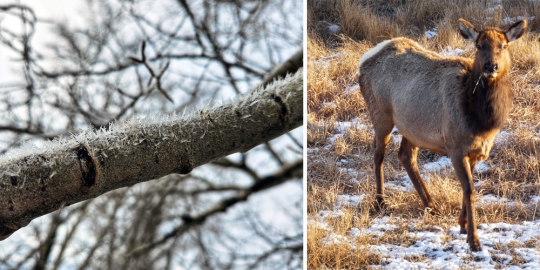

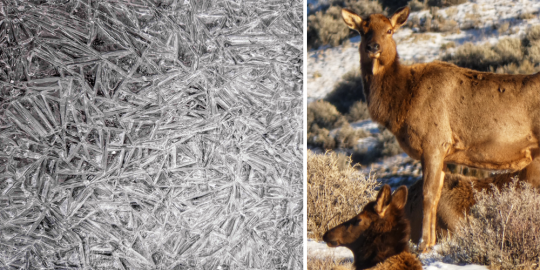


Yellowstone Winter 2023
#photography#yellowstone#nps#yellowstone national park#elk#bison#wildlife#wildlife photography#macro photography#ice#icy#winter#winter wonderland#my post#landscape photography#landscape
2K notes
·
View notes
Text
Very, very fresh bison calf.
Months and months ago I promised y'all photos of the bison birth I was lucky enough to observe at the Cleveland Zoo last spring. As requested, they'll be under a cut, because unlike this lovely photo from the zoo announcement post, my photos are... goopy.
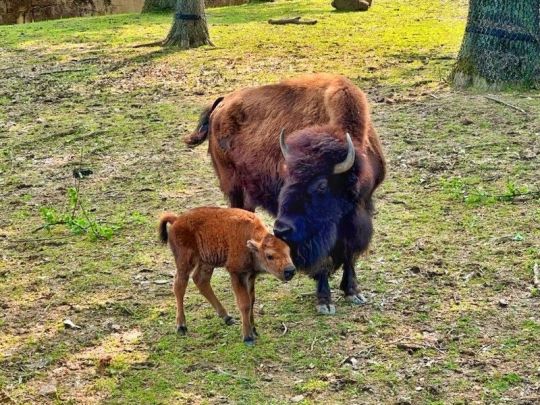
His name is Tighee, a name which the zoo said is "the name of a Shoshone chief."
We walked up just as things started to get going, and the story is below the cut...
This is Blue, a female bison who arrived at the Cleveland Metroparks Zoo in fall of 2022 already pregnant. When we got to the habitat, there were a ton of people gathered around, and it wasn't quite clear what was going on.
Then we noticed her full udder and the extra pair of feet.
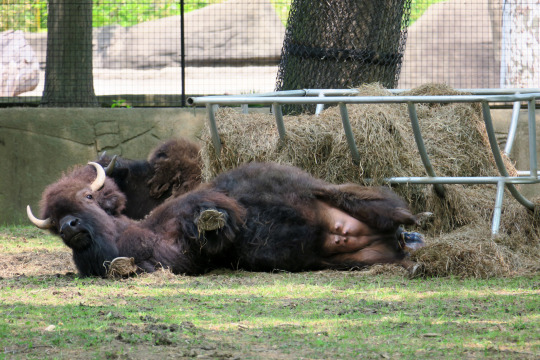
She was dead-center in the (pretty large) habitat, which was nice - though there was a crowd, she had some good distance from everyone for most of it. The calf came pretty quickly, all things considered (something especially helpful when you're holding a heavy camera up on full manual zoom without a tripod). Because she was at a distance, my friend and I spent a bunch of time showing people near us photos on my camera screen so they could get a good view.
I was honestly really surprised at the number of people who asked why the zoo staff weren't in there with her, helping her give birth. So we explained to folk that zoo staff don't normally go in with bison on a normal day because they're so big and dangerous, and that during a birth (a time of potential stress for the whole herd, the rest of whom were off to the side of that habitat) it would be especially risky to do so. But you could see people in the zoo's uniform colors clustered around the fence, keeping a close eye on her.
And then there was a calf! For folk who haven't seen what a whole amniotic sac looks like, I'm including the next couple photos.
This one is still mid-birth, as you can see. The hooves come out first, with the calf's head laying parallel to them.
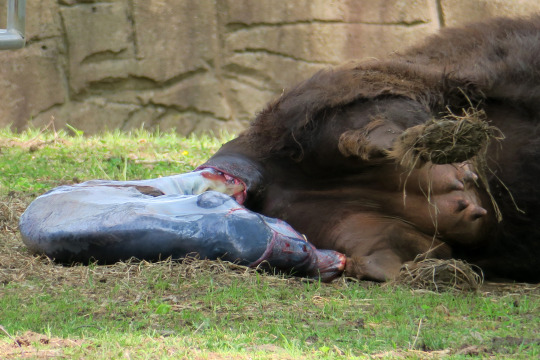
Blue immediately moves to break the amniotic sac and clear the calf's airways of mucus. Om nom nom.
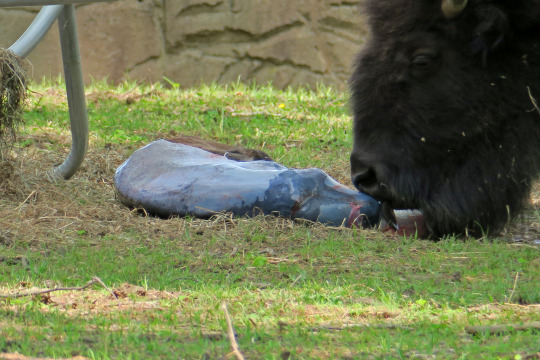

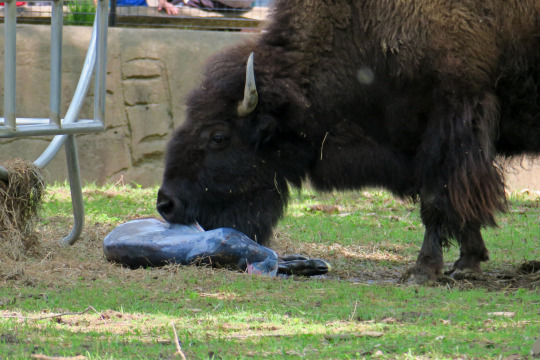
We have open eyes and an awake baby! The amniotic sac is full of fluid that helps protect the baby while it's in the uterus, which means once it's broken, the baby is goopy. One of mom's first jobs is to lick all of it away to dry the calf off.

A first attempt at using legs!
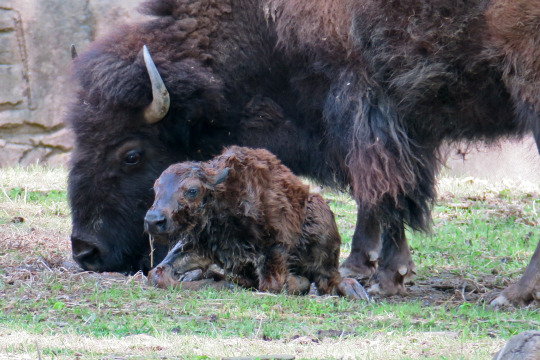
Nope, being born was too hard and legs don't work yet. Time to rest and recover from the effort of thinking about standing up.
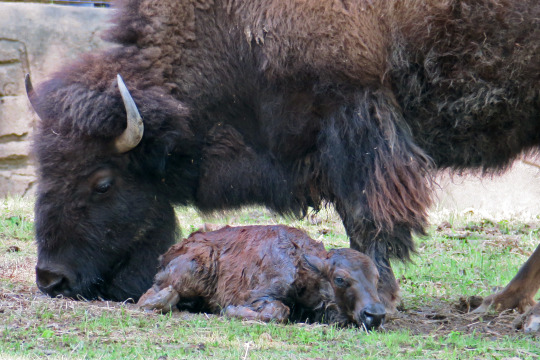
The first inquisitive member of the herd, another young female, comes to check out the newest addition.
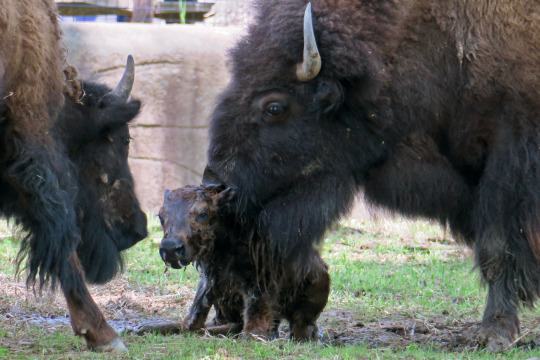
More attempts at legs! Getting better but still not coordinated enough yet.
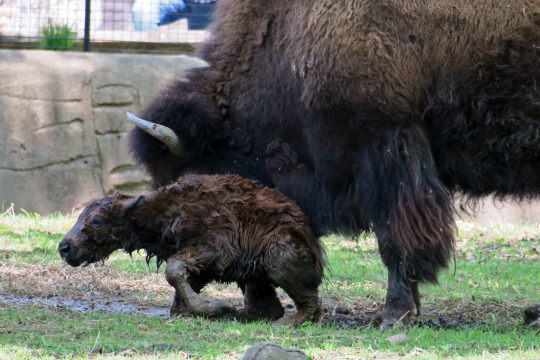

They're starting to help the baby stand up. In a non-captive setting it would be important for him to be able to walk pretty quickly after being born, and he has to stand up to be able to nurse!

Everyone comes to check him out, now.

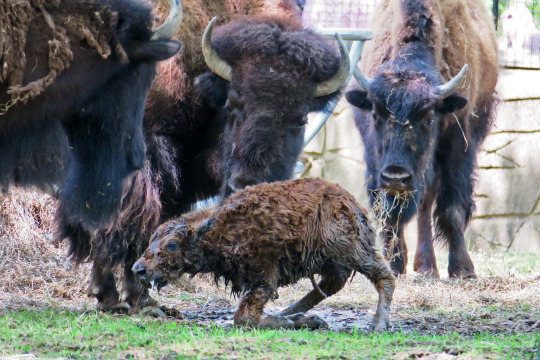
We have legs! They work! He hadn't quite figured out where to nurse from yet, though.
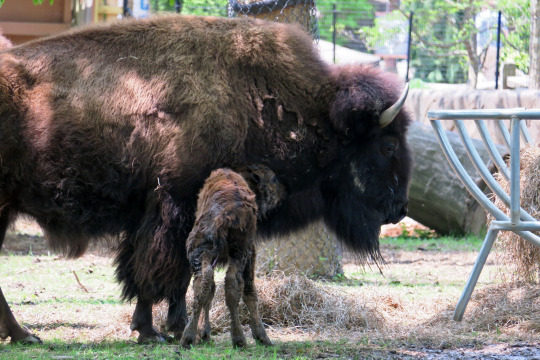
And that's your bison birth for the day!
2K notes
·
View notes
Text
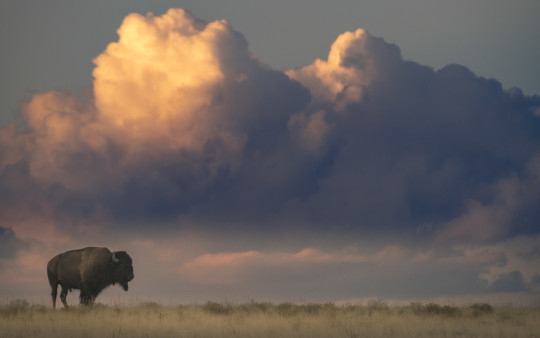
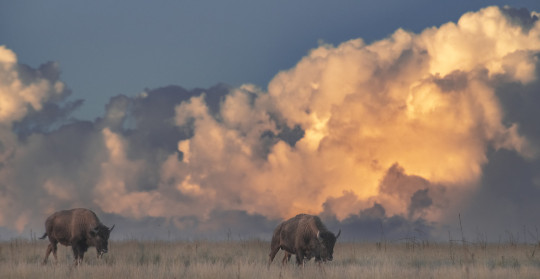
by Jami Bollschweiler
2K notes
·
View notes
Text

Heading down to the Yellowstone River
(c) gif by riverwindphotography, October 2023
2K notes
·
View notes
Text

Bison calf, photographed by Joan Saba
Source: National Wildlife Federation
3K notes
·
View notes
Text
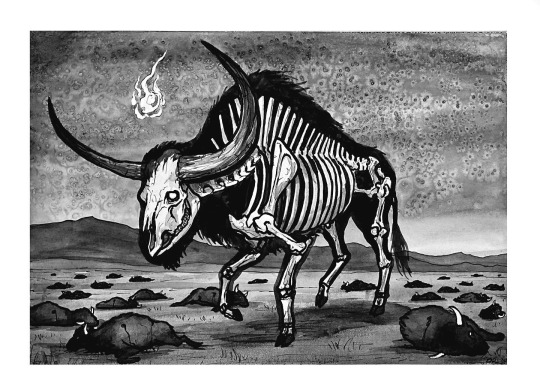
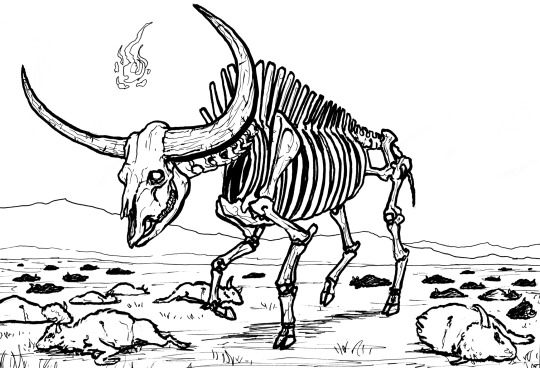
“Manifest Destiny”
Day 26 - Remove
One day the World will say, 'I am no more and I have nothing left to give.’
#illustration#my art#drawing#nature#inktober#western gothic#horror#watercolor#dark art#gothic americana#manifest destiny#extinction#macabre#prehistoric#steppe bison#art history#skeleton#surrealism#inktober 2023#bison
2K notes
·
View notes
Text
In 2022, something happened in Britain for the first time in 6,000 years. Deep in the Kent countryside, a wild European bison calf was born as part of the Wilder Blean rewilding project. The last time wild European bison roamed Britain’s landscapes was after the last Ice Age, some 10,000 years ago, so it’s no wonder the calf’s arrival caused a stir. European bison were once a common sight across most of Europe. As the largest herbivore to roam the continent, European bison could be found from France all the way to the tip of the Black Sea in the Ukraine. The fossil record tells us that European bison have been roving the continent since the end of the Paleolithic Ice Age, with the earliest fossils dating back to 9,000 BC.
Now, bison are bouncing back. They have experienced a 166-fold increase in their population in the last 50 years. And these rates of return are not solely the reserve of the mighty bison. Other wild European mammals are also making a roaring comeback, and the speed of their resurgence suggests that wider, rapid natural regeneration is possible with multiple ecological, and therefore human benefits.
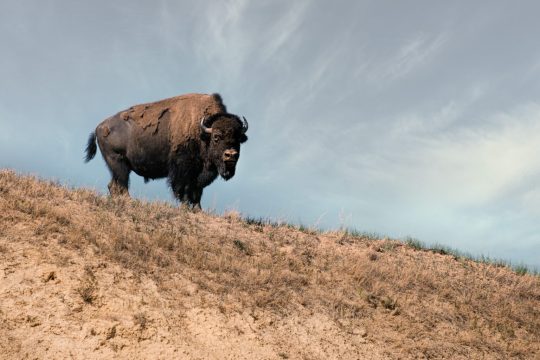
From 1960 to 2016, Eurasian beaver (Castor fiber) populations have ballooned 167-fold, from just a few thousand at the start of the 20th century to over 1.2 million wild beavers today. Grey seal populations have also grown by 6,273 percent and the population of Alpine ibex has risen by 417 percent. Eurasian badger populations have doubled, while Eurasian otter populations have tripled.
While these impressive rates of recovery are not reflected across all of Europe’s 250 wild mammal species, they do provide some evidence-based hope that wild mammals can once again flourish across Europe’s diverse and varied landscapes with the right support and policies in place.
The big picture
... Over the last 50 years the fate of some wild mammals across Europe has shifted. Some populations have experienced a rapid and dramatic increase over the last half century, reversing millenia of decline and offering fresh hope that nature can recover – if it’s given the chance.
Brown bear numbers have risen by an average of 44 percent between 1960 and 2016, while the Iberian lynx has seen its population grow by 252 percent. Humpback whales have seen their numbers rise by 37 percent between 1986 to 2016, while the pine marten – a natural predator to the invasive grey squirrel – has seen its population grow by 21 percent from 1986 to 2016. Some reptile species, such as the loggerhead turtle, have seen its numbers grow by 68 percent over the last 40 years.
The most impressive bounce backs, however, are among the beaver and bison – two species that play vital roles within ecosystems. Both beaver and bison populations have seen 167-fold increases over the last 50 years. These mammals help support a rich mosaic of habitats and biodiversity. Wild bison, for instance, trample and wallow in the soil and sand to create niche habitats for plants, insects and lizards, while also playing an important role in the dispersal of seeds.
Context and background
The impressive recovery rates over the past 50 years have been possible due to a shifting cultural and economic context. Alongside this, there is a growing scientific consensus of the importance of small and large mammals for sustaining biodiversity and helping ecosystems flourish. The sheer diversity of mammals, both in terms of their morphology and their roles within ecosystems, is testimony to the functions they perform. From the tiny bumblebee bat, which weighs just two grams, to behemoth blue whales, weighing in at 150,000 kilograms, mammals really do come in all shapes and sizes.

Wild mammals play a variety of leading roles within an ecosystem, from dispersing seeds, pollinating plants and regulating insect populations, to reducing disease transmission and creating niche habitats for other species. The European bison reintroduced to Kent in the UK have already started clearing paths through undergrowth, ripping the bark off trees, and wallowing around in the mud to make space for seeds and other habitats – natural processes that humans would struggle to replicate. Bison and other large herbivores are often labelled ‘ecosystem engineers’ for this very reason – they shape and manage the land they reside on.
Some species of mammals – such as the magical beaver – are considered keystone species due to their ability to shape the ecosystems around them, creating entirely new habitats through building dams where fish, birds and all manner of species can thrive. Other mammals, like bats, act as indicators of healthy and functioning ecosystems. Between 1974 and 2016, Geoffroy’s bat populations have increased 53-fold across Europe.
Wild mammals also have a role to play in reducing the damage and destruction wrought by climate breakdown. In the temperate climate of Europe, large mammals have been proven to reduce the risk of forest and wildfires by creating gaps in vegetation through grazing and trampling. In the summer of 2022, wildfires ravaged Europe, burning the second-largest area on record. As global temperatures continue to rise, wildfires will increase in their frequency and severity. Bolstering the population of large mammals could provide a useful tool in the fight against fires alongside deep and immediate cuts to emissions...
What’s more, the grazing of wild mammals can also help retain the carbon stability of soil over long periods of time. Soil contains vast amounts of carbon – more than all plants and the atmosphere combined – which makes ensuring its stability important for both climate efforts and environmental conservation. Mammals like the alpine ibex, which have seen their numbers grow by 417 percent from 1975 to 2016, are highly effective at stabilising soil carbon within grazing ecosystems.
-via Rapid Transition Alliance, March 29, 2023
#beaver#bison#mammal#ecosystem#ecology#endangered species#europe#united kingdom#kent#wildfires#rewilding#ecosystem restoration#good news#hope#hope posting
2K notes
·
View notes
Text
On the Sioux Valley Dakota Nation west of Brandon, Man., schoolchildren are throwing pumpkins into a bison pen, a ceremony and sign of respect to an animal that has deep spiritual significance for Indigenous culture and identity.
Community leaders are also educating a new generation about how the bison, known in these parts as buffalo, has important implications for the future of the Prairies – rehabilitating natural grasslands and conserving water in a time of climate change.
"The significance of the buffalo goes back hundreds of years. These animals have saved our lives," said Anthony Tacan, a band councillor whose family is the keeper of this herd.
"They provided food and weapons out of the bones, tools, the hides for clothing, the teepees. It did everything for us. So going forward, we decided it's our turn to give back. It's our turn to look after them."
Continue Reading
#cdnpoli#canadian politics#canada#canadian news#sioux valley dakota nation#first nations#indigenous#american buffalo#american bison#bison#ecology#ecosystem restoration#manitoba
2K notes
·
View notes
Text

A Baby Bison
Beneficial-Sky-7600
1K notes
·
View notes

